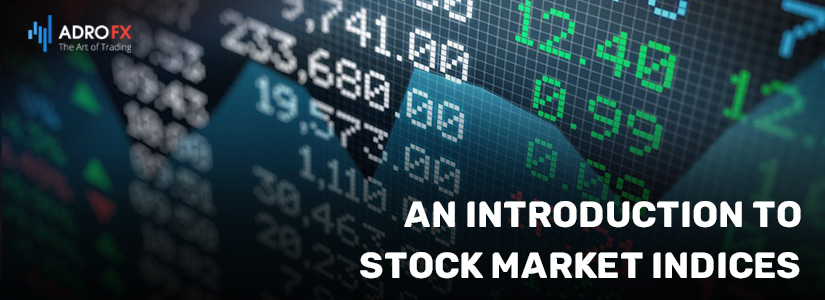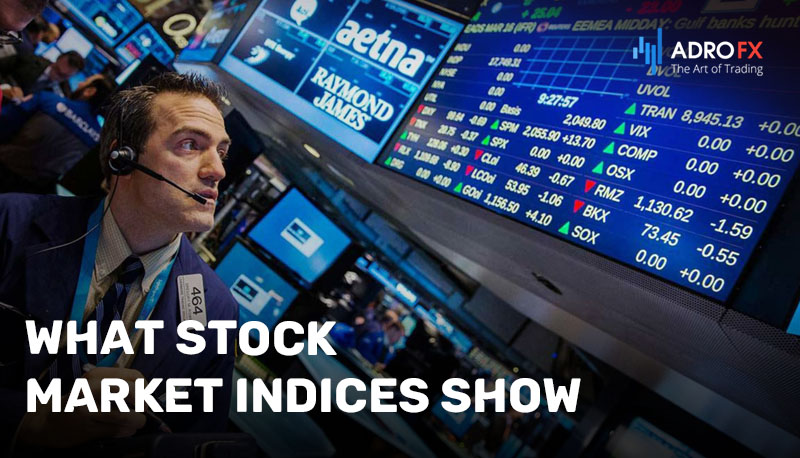An Introduction to Stock Market Indices

The stock market is a crucial component of the global economy, and it serves as a barometer for the overall financial health of a country. Investors and traders alike use various stock market indices to track the performance of different market segments, such as technology, healthcare, or energy. Understanding the stock market indices and how they work is essential for investors to make informed decisions and manage their portfolios effectively. In this article, we will provide a comprehensive explanation of stock market indices, including their definition, types, and how they are calculated. We will also explore the significance of stock market indices in investment decision-making and discuss some of the most popular indices in the world. Whether you are a seasoned investor or just starting your investment journey, this article will provide you with a solid foundation to better understand the stock market indices and their role in the global financial landscape.
Stock Market Index Explained
A stock index is a type of synthetic indicator that determines the price dynamics of a group of stocks.
In addition to price changes, the stock index also indicates trends prevailing in the market at a particular time, because it reflects the behavior of stocks listed on the stock exchange.
Each index is calculated from a specific set of stocks, such as the 30 largest companies by market capitalization (for example Dow Jones 30) or the NASDAQ OMX Global Automobile (QAUTO) - a stock index that tracks the performance of more than 30 major automakers.
A stock index, in simple terms, is a numerical value calculated based on the stock prices of some companies.
More often the stock market indices include the largest companies in the world in the base of calculation, for example, the capitalization of the S&P 500 Index basket exceeds $30 trillion. But there are also indices of small capitalization companies and sectors, second and third echelons, junk stocks, etc.
Providers develop their calculation methodology (or use existing formulas), introducing additional filters that take into account capitalization, free-float, and other nuances.
The index quote itself is just a number. Quotes do not provide insight into the price dynamics of an individual company's stock. For example, the S&P 500 reading is heavily influenced by the IT and healthcare sectors, as among the 500 companies in the index basket, most of those sectors. Other underweight companies may stagnate and their stocks may fall, but if there is an influx of funds to the IT and healthcare sectors, the index quotes will rise.
A stock index is an opportunity to quickly assess the investment attractiveness of a particular sector of the economy or a particular market.

What Stock Market Indices Show
For investors, the most important thing is not a specific value, but the dynamics of their changes, the reaction to the levels, and the renewal of historical extremes.
When determining the investment attractiveness of markets in different countries, for example, not only the growth rate of quotes is assessed, but also the fundamental prerequisites for this.
The stock index is often compared to a thermometer, figuratively measuring the temperature of the market.
Speaking about the functions of a stock market index, we can mention the following:
- Prompt information about the situation in the market or its segments;
- A benchmark for derivatives (options, futures, and forwards);
- A benchmark for evaluating investment performance;
- A specialized tool that helps investors build their stock market indicators;
- Replaces the market portfolio, which is important in portfolio theory and capital market models.
Who's Behind the Indices Calculations?
The term "provider" is understood to mean the one who ensures the calculation. It means not only the direct calculation but also the method of selecting stocks to the basket, the regularity of reviewing the composition of the basket, and the conditions for urgent exclusion or inclusion of companies into the index.
The role of such providers can be as follows:
- Stock exchanges directly
- Rating agencies
The S&P 500 Index, for example, is adjusted by a committee specially created for this purpose by the parent company Standard & Poor's, an agency engaged in financial analysis and stock ratings. Since 2012, after S&P Global, News Corp, and CME Group merged under the umbrella of S&P Dow Jones Indices LLC, all families of S&P and Dow Jones indices have been run by that very company.
A large number of large banks also construct indices in various areas, but the most popular among the bank indices are the JPMorgan and Barclays bond indices (JP Morgan Global Government Bond Index, Bloomberg Barclays Global Aggregate Bond Index).
Japan's main stock index Nikkei 225 has been calculated by the financial newspaper Nihon Keizai Shimbun (an abbreviation of the publication serves as the index name) since 1970 and still does so.
A large number of indices are maintained by large stock exchanges around the world (the NASDAQ, DAX).
Importance of the Stock Market Indices
Stock market indices play a vital role in the global financial landscape. They are widely used as a barometer of the overall health of the stock market and the economy as a whole. These indices allow investors to monitor the performance of specific market segments and individual stocks, which helps them make informed investment decisions.
Furthermore, stock market indices are used by financial analysts and policymakers to gauge the state of the economy and to make predictions about its future performance. They are also used by central banks to determine monetary policy and by governments to assess the impact of economic policies and regulations.
The popularity of stock market indices has led to the creation of various financial products such as exchange-traded funds (ETFs) and index mutual funds that track these indices. This has made it easier for investors to diversify their portfolios and gain exposure to different market segments.
Overall, stock market indices are an essential tool for investors, financial analysts, and policymakers alike, providing crucial information about the performance of the stock market and the broader economy.
Major Stock Market Indices
Every investor and trader who already has some investment experience knows the stock indices of the world. Here are the most mentioned major world indices:
- S&P 500: The S&P 500 is a market capitalization-weighted index of the top 500 publicly traded companies in the United States. It is widely regarded as a benchmark for the performance of the U.S. stock market as a whole and is often used as a proxy for the overall health of the U.S. economy.
- Dow Jones Industrial Average (DJIA): The DJIA is a price-weighted index that tracks the performance of 30 large-cap companies traded on the New York Stock Exchange (NYSE) and the NASDAQ. It is one of the oldest and most widely recognized stock market indices in the world.
- Nasdaq Composite: The Nasdaq Composite is a market capitalization-weighted index that tracks the performance of all the companies listed on the Nasdaq stock exchange. It is known for its heavy weighting towards technology stocks and is often used as a benchmark for the performance of the technology sector.
- FTSE 100: The FTSE 100 is a market capitalization-weighted index of the top 100 companies listed on the London Stock Exchange (LSE). It is widely used as a benchmark for the performance of the UK stock market.
- Nikkei 225: The Nikkei 225 is a price-weighted index that tracks the performance of the top 225 companies listed on the Tokyo Stock Exchange. It is one of the most widely used indices for tracking the performance of the Japanese stock market.
- Shanghai Composite: The Shanghai Composite is a market capitalization-weighted index of all the stocks listed on the Shanghai Stock Exchange. It is often used as a benchmark for the performance of the Chinese stock market.
These indices are widely followed by investors and financial analysts around the world, as they provide insight into the performance of specific market segments and the overall health of the economy.

How Can You Invest in Stock Market Indices?
Indices are not suitable as a trading instruments, but rather as derivatives, since the index itself is simply a numerical value.
In the second half of the 20th century, special investment funds (ETFs) appeared on stock exchanges, which began to simply copy the index baskets and their calculation method, but buying real shares in the same proportions according to this principle.
ETFs on major US stock indices are particularly popular. For example, the SPY copies the S&P 500 basket with an accuracy of over 95%. People have already invested more than $381.73B (billions - billions) into this ETF.
Shares of such funds are traded on stock exchanges and can be purchased in the same way as standard securities. All you need is a broker with access to the appropriate exchange and relatively small initial capital. As for the potential of such investments, the best proof of the effectiveness of such investments is the SPY results over 20+ years.
The main advantage of ETFs is that each share of such a fund is a ready-made portfolio. An investor does not need to buy dozens of securities to form an investment portfolio. It is enough to buy a share of, for example, the IYR fund, and he will get a portfolio copying a basket of an index, tracking more than 80 companies in the US real estate sector.
There are thousands of ETFs available on exchanges. Among them, some funds focus on industry stock indexes, and some copy baskets of broad indexes. You can assemble the most diversified investment portfolio possible with this tool.
Moreover, there is another option - indices CFDs (Contracts for Difference). It is a popular investment strategy for traders who want to gain exposure to the overall performance of a particular stock market index. CFDs are derivative financial instruments that allow traders to speculate on the price movements of an underlying asset without actually owning the asset itself. This way of investing in stock indices has numerous benefits, including:
Here are some of the benefits of trading indices CFDs:
- Diversification: Trading indices CFDs provides exposure to a diversified range of stocks within a particular market index. This means that traders can potentially benefit from the performance of multiple stocks within an index, rather than relying on the performance of a single stock.
- Leverage: CFDs allow traders to use leverage to amplify their exposure to the underlying asset, which can potentially lead to larger profits.
- Lower costs: Trading indices CFDs can be a cost-effective way to gain exposure to a market index, as there are typically lower costs associated with CFD trading compared to traditional stock trading.
- Hedging: CFDs can be used as a hedging strategy to protect against losses in other investments. For example, if an investor holds a portfolio of stocks and wants to hedge against a potential market downturn, they could open a short position on an index CFD to offset potential losses.
- Easy access: Trading indices CFDs is accessible to traders around the world, as it can be done through an online trading platform from anywhere with an internet connection.
Why Trade Stock Market Indices with AdroFx
AdroFx offers trading of stock indices through Contracts for Difference (CFDs), which allows investors to speculate on the price movements of the underlying assets without actually owning them. CFDs also provide the potential for higher leverage, meaning that investors can trade with a larger position size than their account balance would allow.
Trading stock indices through CFDs with a broker like AdroFx also provides the opportunity for diversification, as investors can gain exposure to a range of different indices and markets. This can help to spread the risk across different assets and potentially minimize the impact of market volatility.
AdroFx offers some of the best trading conditions in the industry, including competitive spreads, fast execution speeds, and access to advanced trading tools and analysis. Additionally, AdroFx is regulated by reputable authorities, ensuring the safety and security of clients' funds.
Conclusion
Stock market indices are universal indicators. Indices can be used both as an indicator of the state of an economy or a sector and as an investment object.
Originally, they were developed for the convenience of evaluating the state of the economy, but over time, derivative instruments emerged, due to which indices also became the basis for various investment instruments.
Thanks to the abundance of ETFs it is possible not to compile a portfolio independently, but to buy shares of one fund and obtain a full-scale diversified investment portfolio. Futures and options allow earning on indices through active trading.
Let us not forget about the main function of stock indices. This instrument is an excellent indicator of what is happening on the market and in the economy. When working on the stock market, it is desirable to include indicators of this type in the list of analytical tools.

About AdroFx
Established in 2018, AdroFx is known for its high technology and its ability to deliver high-quality brokerage services in more than 200 countries around the world. AdroFx makes every effort to keep its customers satisfied and to meet all the trading needs of any trader. With the five types of trading accounts, we have all it takes to fit any traders` needs and styles. The company provides access to 115+ trading instruments, including currencies, metals, stocks, and cryptocurrencies, which make it possible to make the most out of trading on the financial markets. Considering all the above, AdroFx is the perfect variant for anyone who doesn't settle for less than the best.









